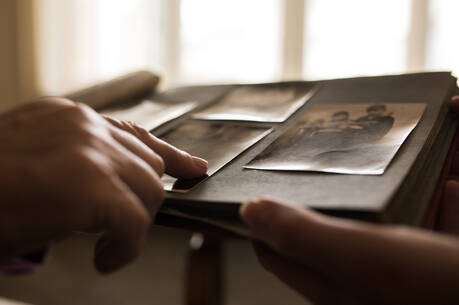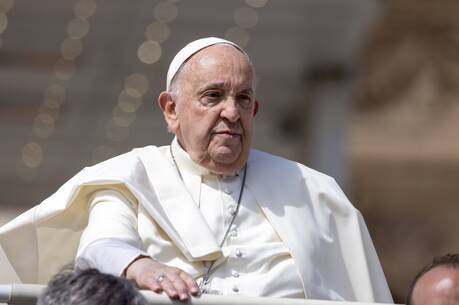Baptized in the rivers of night, Gethsemani has recovered her innocence. Darkness brings a semblance of order before all things disappear. With the clock slung over my shoulder, in the silence of the Fourth of July, it is my time to be the night watchman, in the house that will one day perish.
Thomas Merton, Fire Watch, July 4, 1952, The Sign of Jonas
When I was 15, my mother put a battered copy of The Sign of Jonas in my hands, and I read the above words for the first time. They hit me with the force of a revelation. When I sink into Fire Watch today, it is like walking into the church of my childhood. Just as when I was a boy, the words steady my pulse, deepen my breath, slow my mind. With Thomas Merton I see again, from a perch high atop the monastery, a great canopy of stars and feel the night wind on my face. I become small before the majesty and mystery of God. I pray like a child.
Now in my 30’s, I can see how the early soil of my Catholic imagination was tilled and watered by Merton. Perhaps as much as any influence—going to Mass, attending parochial schools, the rituals of the liturgical year—reading Merton provided my young mind and heart with a trustworthy lens through which to appropriate a larger world and my place in it. This was no small gift.
The Catholic imagination has been described as a certain way of seeing the world, as luminous, evensacramental, charged with God’s presence. Catholics bend their ears toward a hidden wholeness, in which the cacophony of disparate voices blends into a symphonic, or even a hushed Alleluia. But how do we come to see and hear the world in this way? And who will teach the next generation?
For all the essays and books written about Merton, I believe it is worthwhile, even urgent, to turn to him when considering the topic of formation. Writing here as a teacher and parent, I offer four enduring lessons this famous Trappist monk can teach us about nurturing the Catholic imagination. To the extent that we experience acertain poverty in the Catholic imagination today—whether in the pulpit, the teachingmagisterium or the classroom—Merton can remind us what it is we risk losing and what is worthy of our utmost care in the sacred charge of formation.
Teach Them to Pay Attention
"The world is charged with the grandeur of God," wrote the poet Gerard Manley Hopkins, S.J. Merton’s lesson is, "Pay attention, you might miss it." Merton teaches us how, in the words of Kathleen Norris,not to reject our epiphanies, and to embrace ordinary human experience as a locus of God’s presence.
The catechism-driven atmosphere of Catholic education appears suspicious of any religious conversation that begins with personal experience. "Too subjective!" the argument goes. "Plays right into the hands of moral relativism!" With the church fearing relativism and catechists resisting the ambiguity and intimacy of real-life stories, we play it safe. We begin with conclusions, doctrines, eternal truths. If Merton were alive today, I think he would tell us to get over it.
As a prolific writer of journals, Merton believed in the religious transparency of his own experience. Of this, he writes rather matter-of-factly. Journals take for granted that every day in our life there is something new and important. Journaling was for him a means of paying attention to the hand of grace in his life and a way of exorcising the ego-demons that kept him from greater love, surrender and prayer. It was a means of participating in his own salvation.
Merton’s journals modeled for me the value of spiritual self-examination. As a teenager I was wowed by the nakedness of his inner dialogue, watching him discern his way through the relationships in his life. From the frustrations of living in community to the solitude of the woods, Merton showed the latent sanctity within ordinary human struggles. He illuminated nature as a place of revelation.
And he taught me to pay attention to silence. Why not, he might suggest, take children (and ourselves) to church when nothing is happening? Let them drink in the silence, the space, and be awed by the myriad symbols. Let them think and pray. When I taught high school, many of my students (and colleagues) routinely spent an hour in heavy traffic on the way to school. Sometimes the best gift I could give them was an uninterrupted hour in the deep silence of the school chapel, where we would sit, breathe and watch sunlight play through stained glass.
Teach Them to Be Artists
If it is true, as Andrew Greeley wrote (Am., 9/16/00), that the artist is a sacrament maker, a creator of emphasized, clarified beauty designed to make us see, then Thomas Merton is the consummate artist. Basil Pennington, a fellow Cistercian who knew him as Tom, once wrote in Cistercian Studies Quarterly that his friend saw himself as paramountly a poet. But what separates Merton from other writers and poets?
Absorbing his work at a young age did not simply awaken me to beauty, though this by itself would have been something. Merton’s writing nurtured in me the further awareness that it isall gift. Just behind that small tear in the surface of the world breathes the generous living God, the divine artist. Consequently, Merton’s writing often bleeds spontaneously into prayer.
We may have to teachourselves how to do this first, but helping young people experiment with various artistic languages that give meaning to their experience is essential. As Greeley suggests, this is no less than the art of sacrament-making. Especially for those in oppressive situations—poverty, neglect, abuse—expression through poetry, art, music or journaling may become a lifeline through sin and suffering. Artistic expression gives people a language for building meaning, order, even beauty, out of existential chaos—an essential thrust of the Catholic imagination.
With teenagers especially, we should explore the spiritual content of art forms they already find meaningful. My high school students were always pleasantly surprised, for example, when I listened to their favorite music in class and elicited from them what meanings it might hold. The rule of thumb here is to preach less and listen more and throw rigid lesson plans out the window.
Teach Them Grace
Implicit in Merton’s vast body of work is a profound theology of grace. In giving regular voice to his experience of God, Merton illuminates patterns: joy comes when we least expect it; love and consolation arrive unmerited, as gifts. Merton sees God’s grace raining down on all, wheat and chaff alike. And readers familiar with his journals know there was plenty of chaff in his spiritual life.
The experiential language of grace, or Spirit-language, is the pearl in the Catholic tradition that connects experiences of joy, sorrow and mystery with the boundless God behind it all. The recognition of grace in our life, the experience of beauty or consolation in the midst of darkness, the poetry of being loved and forgiven: all of these are, as William J. O’Malley, S.J., suggests (Am., 9/16/00), essentialpre-evangelizers upon which the doctrinal language of Catholicism may subsequently be built. When people are ready to connect their ordinary experiences with God-language, then the catechism and other resources—Bill Huebsch’s A New Look at Grace: A Spirituality of Wholeness is a classic—can help us teach them the language of grace.
Teach Them Openness
While the magisterium and academic theologians argue over doctrinal language, Merton hints that all of it crumbles before time, death and the God of eternity. Words and concepts pass away. Even the holiest buildings burn to ashes, he writes in Fire Watch, like beasts that sing for a while and then disappear into mystery. The apophatic thrust of Merton’s religious imagination partly explains his basic trust of other religions as paths to God.
Merton’s openness toward the non-Christian world is also rooted in what Pennington calls his image-theology, which he absorbed from St. Bernard of Clairvaux: that there exists in human nature itself an ineradicable potentiality for divine union, which is the very image of God. What begins as a particular experience of one’s own dignity and salvation opens the Christian heart toward the universal: If for me, then for all the world.
Merton showed me that I could be Catholicand trust other religions as paths toward the mystery of God. There was nothing in interreligious dialogue for me (or my parents) to fear, since it would be built upon a deeply rooted Catholic imagination. One of my most fruitful teaching classes involved students in open dialogue with a guest speaker, an Orthodox Jew. A majority of my Catholic students had never met a Jew, and certainly fewer had ever discussed the meaning of Jesus Christ with one. Why should such pregnant encounters be so rare? I have found that only when Catholic identity is built superficially—upon memorized formulas, for example—will our young adults embrace non-Catholic philosophies and worldviews at a whim.
Remembering the Song
People yearn for religious voices that affirm the life of spirit and feed religious imagination. In this regard, Merton has been the pre-evangelizer par excellence. And yet, when talking to younger Catholics about Merton, one can no longer expect to be preaching to the choir. In six years of teaching I recall just one student who was already acquainted with Merton’s name before I introduced him to the class. While I might expect this of teenagers, the fact that ignorance of Merton is also true of most of my Catholic peers in their 30’s bespeaks a broader problem in Catholic formation.
We appear to be raising still another generation of Catholics who are completely unaware of the artistic, intellectual and prophetic contributions of people outside Rome (save Mother Teresa). A great many of our young have been taught reflexively to ask one question with regard to the Christian life: "What does the catechism say?" As for Pope John Paul II, few students know him as a person with a history, a human narrative out of which he leads. In their imagination the pope hovers abstractly somewhere out there, up there, along with the church and the catechism.
Catholic studies programs may introduce college students to Merton, Flannery O’Connor, Hopkins and others who fed the imaginative fabric of older generations. But this may be too late. The strongest stirrings in my own Catholic imagination happened in childhood, when the hymns, the smells and bells, the sheer bigness of God’s mystery overwhelmed me. By the time young adults reach college, they may be struggling to survive a crisis of meaning, much less a crisis in Catholic identity.
But whether we are talking about children, teenagers or adults, it is difficult to preach to a choir that has entirely forgotten the song. Have we been so busy hurling statements at one another from left and right that we’re no longer able to hear the music of our faith? Marion Crowe (Am., 5/7/01) echoes the growing frustration with this ecclesial racket: I need to feel good about being a Catholic. Not a conservative Catholic. Not a liberal Catholic. Just a Catholic, once again.
Thomas Merton reminds us what we risk losing if we do not remember the song of our faith. He can help young people hear it for perhaps the first time. This has been Merton’s gift to me and to countless others who long to hear music again.









Thank you.
Thank you.